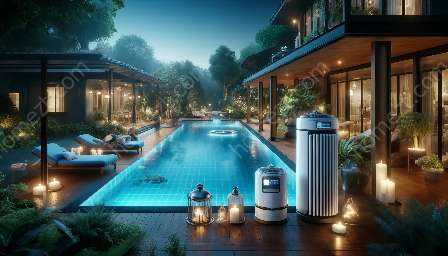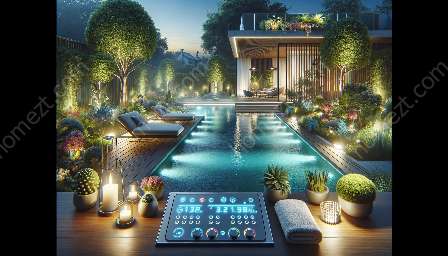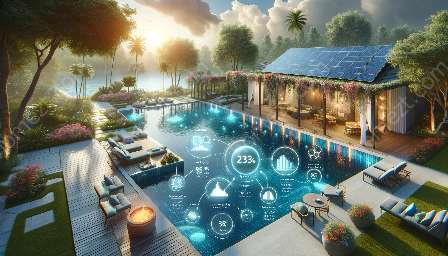Pool temperature control plays a crucial role in maintaining the ideal conditions for swimming pools and spas. It encompasses a range of technologies and methods that help regulate the temperature of the water, ensuring comfort and safety for swimmers and spa enthusiasts. In this comprehensive guide, we will delve into the significance of pool temperature control, its compatibility with pool heating systems, and its impact on the overall experience of using swimming pools and spas.
The Importance of Pool Temperature Control
When it comes to recreational and therapeutic activities in swimming pools and spas, temperature control is a critical factor. The ideal water temperature can significantly enhance the enjoyment and health benefits of these facilities. Whether for relaxation, exercise, or hydrotherapy, maintaining the right temperature is essential for providing a comfortable and safe environment.
Benefits of Optimal Temperature
The benefits of maintaining optimal pool and spa temperatures are numerous. It promotes relaxation, relieves muscle tension, and supports hydrotherapy treatments. Additionally, the right temperature facilitates enjoyable swimming experiences and contributes to overall well-being. Temperature control is especially vital for indoor pools and spas, where external environmental factors can influence water temperature.
Compatibility with Pool Heating
Pool temperature control is closely linked with pool heating systems. While heating systems are responsible for increasing the water temperature, effective temperature control ensures that the desired warmth is maintained consistently. By integrating pool heating with advanced temperature regulation methods, pool owners can create a comfortable and inviting aquatic environment regardless of the external climate conditions.
Methods of Pool Temperature Control
Several methods and technologies are employed to control pool temperature. These include:
- Heating Systems: Utilizing solar, electric, or gas heating systems to raise the water temperature to the desired level.
- Thermostats and Sensors: Installing thermostats and sensors to monitor and adjust the water temperature automatically.
- Coverings and Insulation: Using pool covers and insulation materials to prevent heat loss and maintain the desired temperature.
- Climate Control Systems: Implementing advanced climate control systems that integrate heating, ventilation, and air conditioning (HVAC) to regulate pool temperature.
Advanced Technologies
Advancements in technology have introduced innovative approaches to pool temperature control. Smart and energy-efficient systems allow for remote monitoring and management of pool temperature, providing convenience and cost savings for pool owners. Additionally, eco-friendly solutions, such as solar-powered heating and heat pump technology, offer sustainable ways to maintain optimal water temperature while reducing environmental impact.
Enhancing the Pool and Spa Experience
By prioritizing effective temperature control, swimming pool and spa owners can enhance the overall experience for their patrons. The ability to maintain a comfortable and consistent water temperature contributes to customer satisfaction, loyalty, and positive word-of-mouth referrals. Moreover, it creates an inviting and relaxing environment, attracting more individuals to enjoy the benefits of swimming and spa activities.
Conclusion
Pool temperature control is an integral aspect of pool heating and the overall functionality of swimming pools and spas. It is essential for creating a safe, comfortable, and enjoyable aquatic environment. By understanding the significance of temperature regulation and utilizing advanced technologies, pool owners can elevate the experiences of their patrons and promote the wellness benefits of swimming and spa activities.















